The Lesser-Known Causes of World War I
Exploring the role of Morocco, Libya, and Balkan conflicts in the lesser-known causes of World War I.
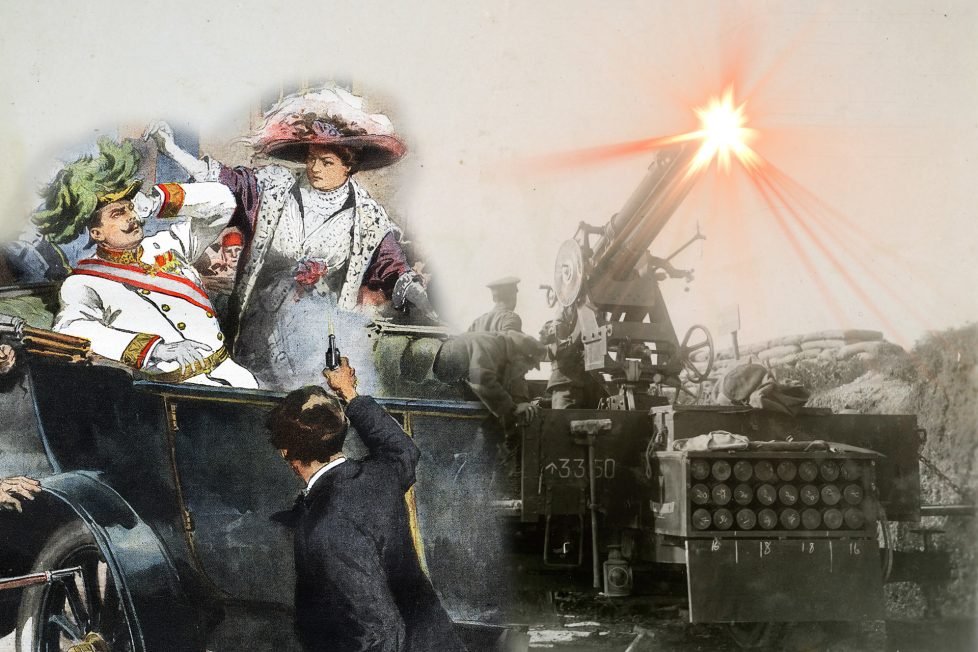
Exploring the role of Morocco, Libya, and Balkan conflicts in the lesser-known causes of World War I.

Table of Contents
ToggleThe causes of the First World War taught in high schools and colleges across the country are all accurate, but they only tell a part of the story. What can be distilled into a single lesson or for a final exam can only reach so far. If we take a closer look at some of the roots of the First World War, we can see a complicated situation that made the prospect of global war more likely.
Before Austrian Archduke Franz Ferdinand was assassinated on June 28, 1914, Europe and the wider world moved closer toward hostilities, set off by that single spark.
The July 1914 Crisis that resulted in World War One is the most well-known and well-considered of the crises leading to the start of that conflict and with good reason. However, a number of other crises that took place in Europe and North Africa helped to spark the war through a general increase in tensions and imperial squabbling.
Three crises of which two were diplomatic and one was a hot war greatly increased the chances of a wider war. In reality, the initial conflict directly triggered two subsequent wars and indirectly led to the outbreak of World War I.
The first two crises occurred in the North African nation of Morocco. The majority-Arabic-speaking population was beset by various potential colonizers, including Spain, France, and Germany.
During the First Moroccan Crisis in 1905-1906, the great powers almost went to war over the prospect of which European nation would be the hegemon over this slice of North Africa. The territory had been mostly controlled by France up until this point. Kaiser Wilhelm II of Germany traveled to Morocco in 1905 and met with its Sultan. The Kaiser stated that he would support the Moroccan leader as an independent one, which was a direct challenge to France.
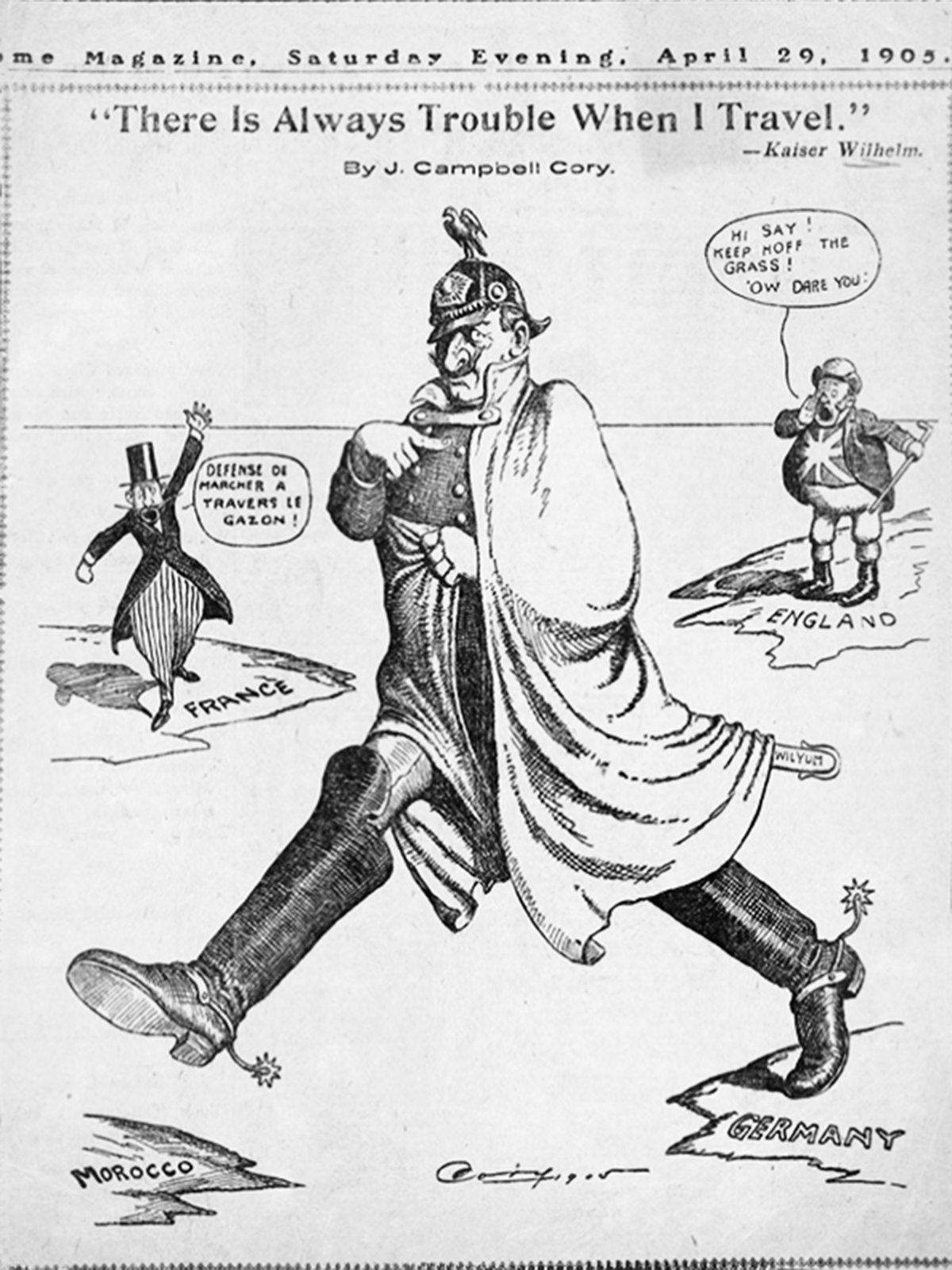
“My study of history hasn’t encouraged me to strive for world domination. In the empire of which I dream, the German emperor will be trusted by other countries and must be seen as an honest and peaceful neighbor,” the Kaiser said.
The two powers nearly came to blows. France canceled its military leave and Germany signaled that it could open an alliance with the Moroccan Sultan. Both sides made military maneuvers in late 1905 and early 1906. The crisis led to the resignation of France’s Prime Minister Maurice Rovier and the opening of a conference over German concerns.
The initial concerns were settled at the Algeciras Conference, which saw many of the world’s great powers negotiating. It also set much of the tone for the coming war, with Germany having the firm support of Austria-Hungary, and France having the support of Russia, Britain, Italy, and the United States.
The crisis did not lead to war, but increased tensions and drew the future Allied powers closer together.
The Second Moroccan Crisis took place just five years later in 1911. During this incident, Germany sought a territorial concession in North Africa and sent a gunboard, the SMS Panther, in a Moroccan port. The crisis started after a rebellion against the next Moroccan Sultan and French intervention to put it down. Germany responded by sending the gunboat, dramatically increasing the fear of potential war.
The settled negotiations between the two nations saw France consolidating its hold on Morocco in exchange for concessions in central Africa.
This crisis pushed Europe closer to the point of war and resulted in France and Britain signing a secret naval agreement in case of future war with Germany.
The issues unfolding in Morocco were just part of the wider tension in North Africa. The colonization of the entire region was closely tied to the centuries-long decline of the Ottoman Empire. Different colonial powers took advantage of the situation, sniping away colonies and former protectorates from the Ottomans. France dominated Morocco and Algeria. Britain soon took the lead in Egypt. However, there was the question of the isolated territory of present-day Libya still loosely held by the Ottomans.
As the Second Moroccan Crisis continued, the detached territory was attacked by Italy. Italy, recently unified in the previous decade, was seeking to build its own empire. Despite other footholds in what is today Somalia and Eritrea, Italy’s imperial ambitions were going particularly poorly. The country had been humiliated by Ethiopia at the Battle of Adwa in 1896.
Italy was still seeking territory, then called Tripolitania, and the decline of the Ottoman Empire appeared to be a great opportunity.
Italy demanded the territory and had made a number of secret negotiations with Britain, France, and Russia on the subject in previous years despite being a part of the Triple Alliance with Germany and Austria. Italy demanded a certain amount of control over the territory, which the Turkish government denied. The Italians launched the war without the consent of its allies, partially showing the independence it would show from the Triple Alliance once the First World War broke out in 1914.
The war initially seemed like a slam dunk for Italy. The first steps of the war appeared to go very well, while the Ottomans appeared surprisingly weak. The Turks had only a small force in the territory and saw it separated from the remainder of the empire.
Following initial success, Italy found itself fighting a number of local forces and fighting in the country’s interior. The fighting became longer and more brutal than the Italians originally considered and resulted in massacres, including the death of 500 soldiers by the Turks and Italian soldiers massacring thousands of civilians in Tripoli.
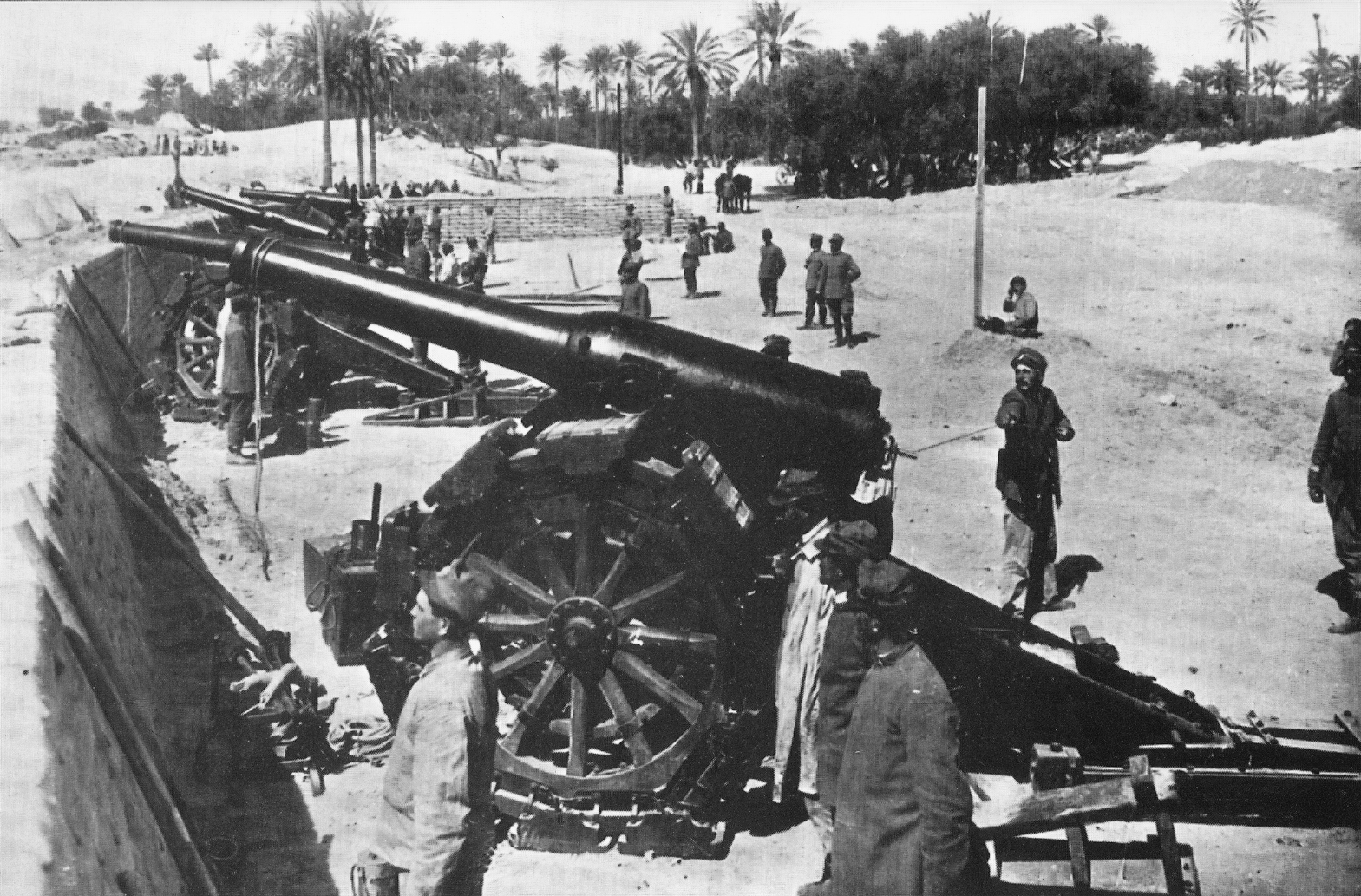
The conflict in Libya had a number of far-reaching effects that impacted the start of World War I just several years later. For starters, it showed significant weakness in the Italian military. The county also gained an important foothold in Africa that would whet the appetite of future Italian imperialists such as Benito Mussolini. The conflict also started to tear Italy away from its Triple Alliance partners, foreshadowing Italy joining the Allied side in 1915.
The conflict also sparked two immediate conflicts. The Ottoman Empire’s struggles and distraction were a major impetus for the states of the Balkans to challenge the Ottomans. The Ottoman Empire was struggling to keep its European possessions and its former colonial subjects in nations such as Bulgaria, Montenegro, Serbia, and Greece were anxious to get even.
The aforementioned nations came together to form the Balkan League, which soon challenged the Ottomans in the First Balkan War, which was soon followed by a second.
The instability in part driven by the Italo-Turkish War helped drive four of the countries of the Balkans against their former colonial overlord.
The 1912-1913 First Balkan War showed just how far these nations had prepared for this eventuality and the fundamentals of the Ottomans, nicknamed the “Sick Man of Europe.”
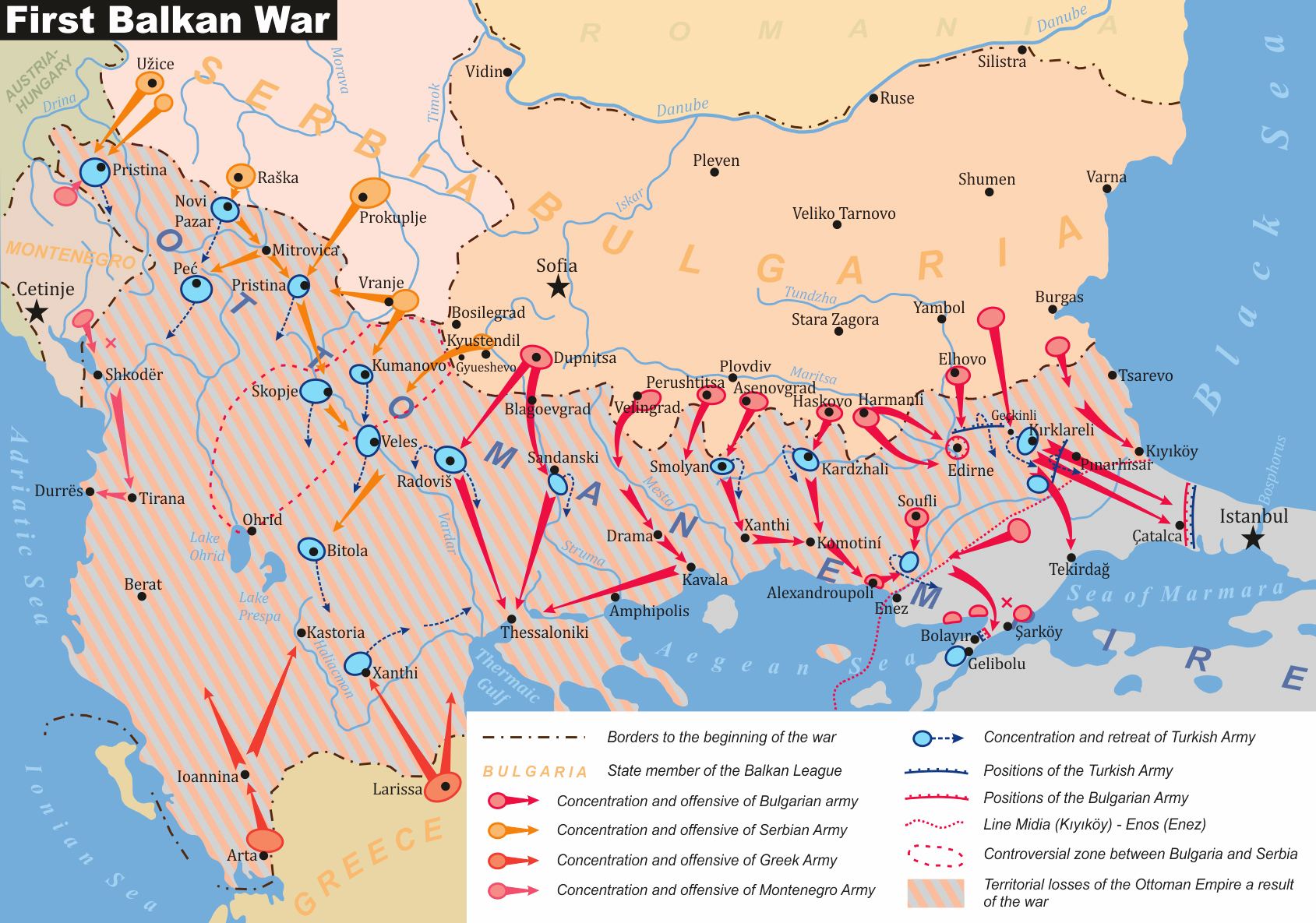
The First Balkan War saw the Ottomans nearly driven from Europe, and the four-power alliance victorious. However, the win underscored diplomatic disagreements that would feed into another conflict, then the First World War.
Following the Balkan League’s victory, the partners disagreed over splitting the spoils of their conquests. Bulgaria soon fought with all three of its former allies, as well as neighboring Romania and even the Ottomans.
This Second Balkan War further destabilized the situation. It left Bulgaria diplomatically isolated from its traditional ally in Russia.
Furthermore, the Italo-Turkish War and the two Balkan Wars pushed the Ottoman government, under the control of the Young Turks, to close ranks with Germany. The situation not only deepened military cooperation between the two nations but also played a role in drawing the Ottomans into the coming Great War on the side of the Central Powers.
The instability in the Balkans also raised the scars of an earlier crisis nearby. In 1908, Austria-Hungary formally annexed Bosnia, which it had been ‘protecting’ for the Ottoman Empire over the previous three decades. The annexation led to a sharp increase in anti-Austrian sentiment among the Serbo-Croatian speakers of the region, who hoped to unite as one country.
One organization, the Black Hand, took advantage of the chaos. The group is blamed by many historians for the assassination of Franz Ferdinand in Sarajevo, Bosnia, which precipitated the start of the First World War.
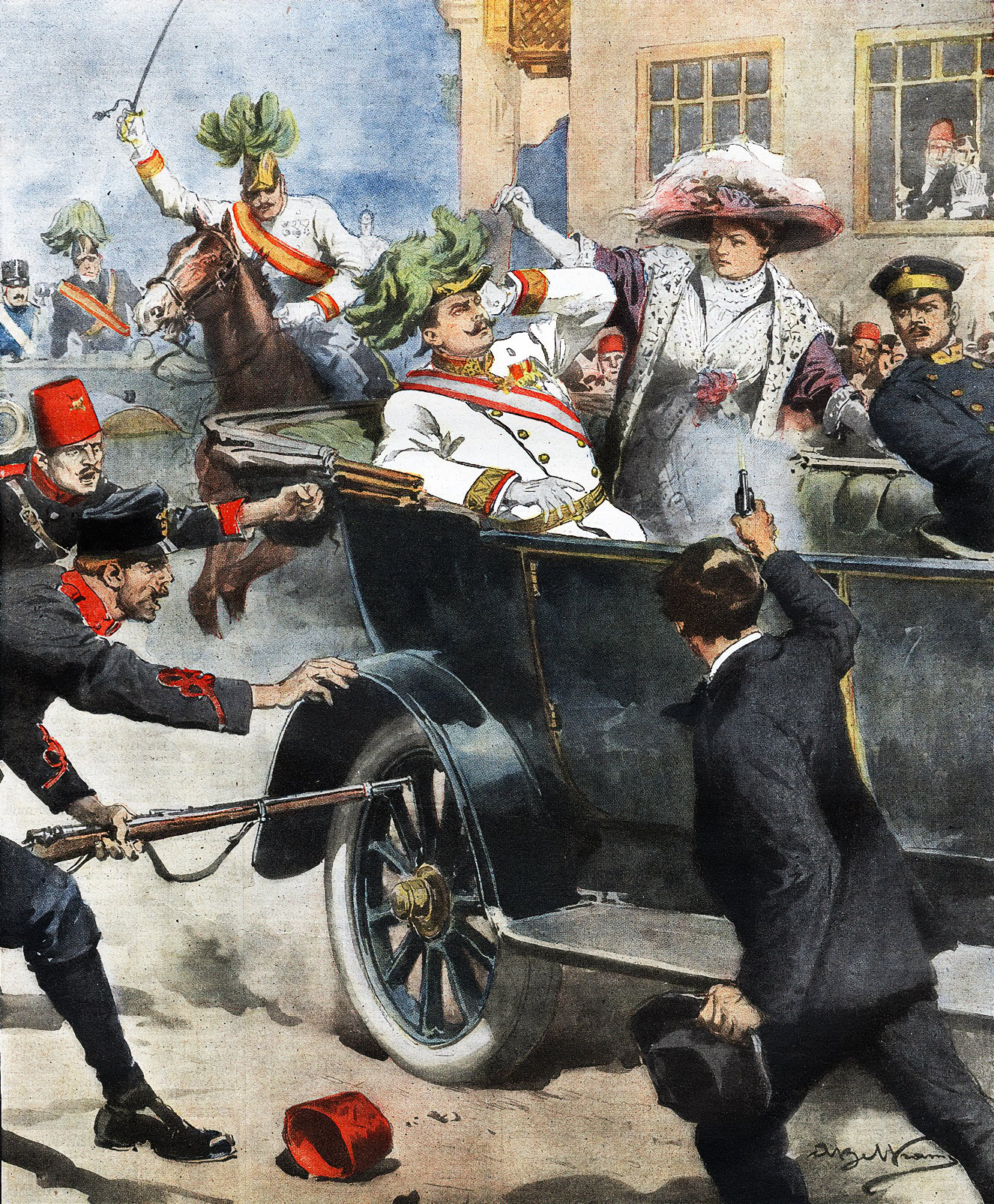
There were multiple causes that led to the First World War, but the crises that boiled the tensions in Europe were among the largest. Each passing crisis increased the stakes of a potential crisis, and aligned nations into two fairly clear sides.
While much of the diplomatic wrangling done in 1914 and 1915 helped shape the future Allied and Central Powers, the decade prior to Ferdinand’s assassination did just as much to place the great powers on two opposite sides, seemingly bound for conflict.
